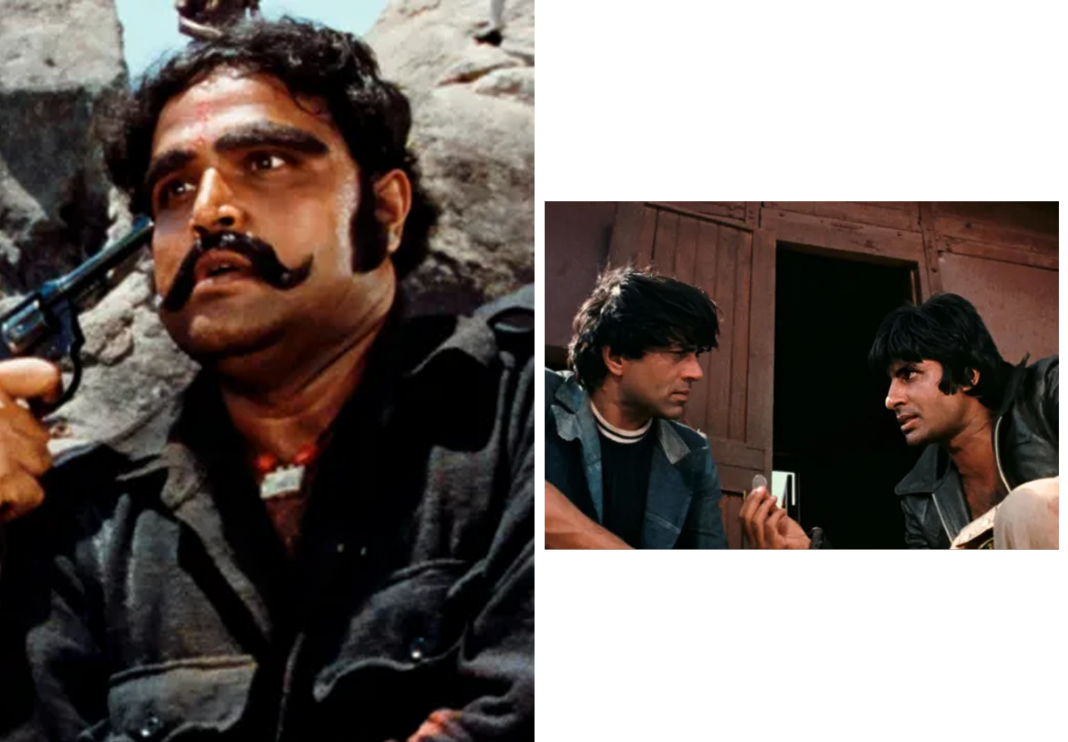Fifty years after redefining Indian cinema, Sholay is back—bigger, bolder, and finally whole. The uncut version of Ramesh Sippy’s legendary 1975 action-drama will premiere this week at Italy’s prestigious Il Cinema Ritrovato Festival, complete with never-before-seen scenes and the original, long-censored ending. For fans, it’s not just a restoration—it’s a resurrection.
A cinematic giant reawakens
Sholay, one of the most revered films in Indian cinema, is making a triumphant return to the big screen. This time, audiences will witness it as its creators originally intended. The fully restored, 204-minute version of the film will be screened in all its uncut glory at the Piazza Maggiore in Bologna—a fittingly grand venue for a film of such scale and legacy.
Written by legendary screenwriting duo Salim-Javed and helmed by director Ramesh Sippy, Sholay featured a dream ensemble cast: Amitabh Bachchan, Dharmendra, Hema Malini, Jaya Bhaduri, Sanjeev Kumar, and Amjad Khan, who immortalized the role of the ruthless bandit Gabbar Singh. Part Western, part samurai tale, part masala blockbuster—Sholay blended global inspiration with Indian storytelling, creating something utterly original and unforgettable.
Set in the dusty, fictional village of Ramgarh, the film tells the story of two small-time criminals, Jai and Veeru (Bachchan and Dharmendra), hired by a retired police officer to capture the terrifying Gabbar Singh. What follows is a sweeping saga of friendship, revenge, sacrifice, and poetic justice—epic in both emotion and scale.
The ending that never was—until now

What makes this restoration so historic is the inclusion of the film’s original ending, which had long been suppressed by Indian censors. In the version originally shot, Gabbar Singh is killed—crushed by the spiked shoes of Thakur Baldev Singh, the retired jailer played by Sanjeev Kumar. But the censors objected, claiming the violence was too graphic and that a former law officer taking justice into his own hands was unacceptable, especially during India’s political Emergency.
Faced with a choice between shelving the film or softening the finale, Sippy chose the latter. The cast and crew were rushed back to the rugged hills of Ramanagaram to reshoot a tamer conclusion—one in which Gabbar is captured instead of killed. That revised version is the one that audiences have known for decades. Until now.
According to Shivendra Singh Dungarpur of the Film Heritage Foundation, this newly restored cut is the most faithful to Sippy’s original vision. Alongside the uncut ending, the film now features deleted scenes, enhanced visuals, and remastered audio—bringing new life to a film that already seemed immortal.
A restoration against all odds
The journey to restoring Sholay was as epic as the film itself. The original 70mm prints were long lost, and the surviving camera negatives were badly deteriorated. In 2022, Shehzad Sippy, son of the director, approached the Film Heritage Foundation with a proposal to restore the film, revealing that several film elements were sitting in an unlabelled warehouse in Mumbai.
That warehouse turned out to be a treasure trove. Inside the cans were the original 35mm camera and sound negatives, sparking excitement among restoration experts. Additional reels stored in the UK—accessed with help from the British Film Institute—were also recovered. Together with L’Immagine Ritrovata in Bologna, one of the world’s top restoration facilities, the team began a painstaking, three-year process of digital resurrection. What they uncovered was extraordinary: not only the footage needed to recreate the original ending, but also rare behind-the-scenes material and even the original camera used to shoot the film.
From rocky debut to cultural juggernaut
It’s hard to imagine now, but Sholay had a shaky start when it debuted in 1975. Critics panned it. India Today called it “a dead ember.” Audiences were silent. Initial screenings sparked no laughter, no applause—just confusion. As film writer Anupama Chopra noted in her book Sholay: The Making of a Classic, there was even panic among the producers.
But then came the shift. Word of mouth spread. Audiences began returning—quoting lines, mimicking characters, and humming RD Burman’s unforgettable score. Within weeks, it was a full-blown sensation. A special 48-minute record of the film’s dialogues was released, selling hundreds of thousands of copies. Dialogues became wedding punchlines, political soundbites, and advertising slogans. Gabbar Singh, the villain no one could forget, became a cultural symbol.
In Mumbai’s Minerva theatre, Sholay ran continuously for over five years—three years in regular shows, and two more as matinees. Even 40 years later, when it was released in Pakistan in 2015, it outperformed most Indian films of the previous decade. As distributor Shyam Shroff once said, “As they used to say about the British Empire, the sun never sets on Sholay.”
A timeless triumph of justice and drama
So why does Sholay still resonate, half a century later? Amitabh Bachchan, reflecting on the film’s endurance, perhaps said it best: “The victory of good over evil and… most importantly, poetic justice in three hours! You and I shall not get it in a lifetime.”
With this restoration, a new generation—and loyal fans—will finally see the film as it was meant to be. More than just a film, Sholay is an institution. Its return is not just a nod to nostalgia but a recognition of storytelling that transcends borders, genres, and generations. And now, in Bologna under the stars, that story will be told again—with its true ending at last.



